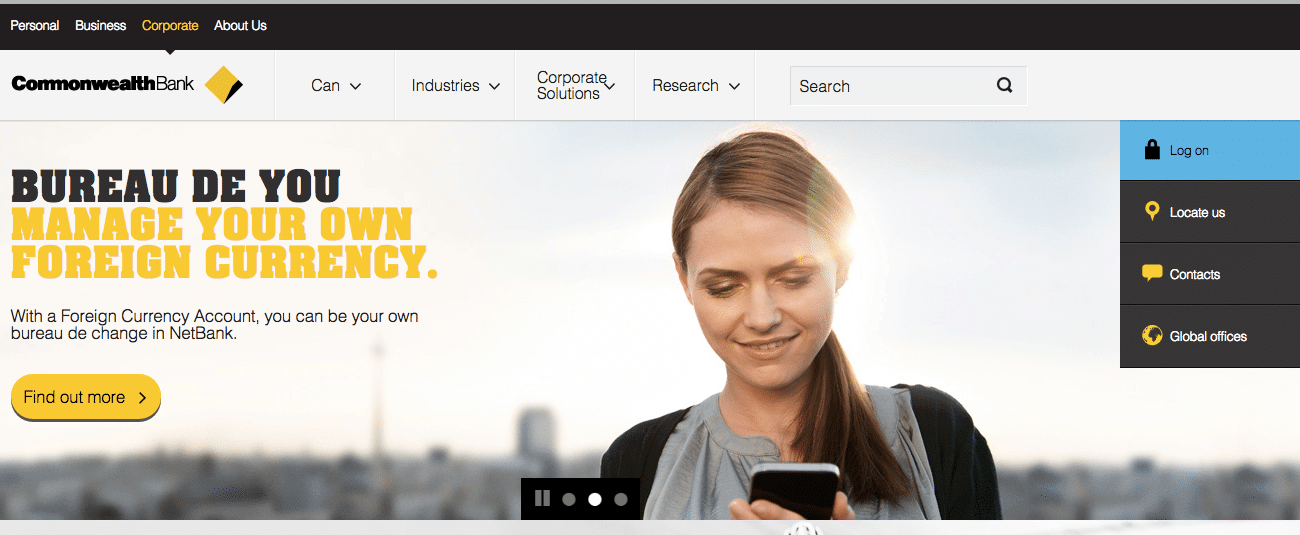If your company has more than one brand, or more than one business channel, there’s probably been a discussion around whether each of those brands or channels should have their own standalone websites, or they should all be combined into one. This blog is a variation of a report I wrote for a client, recommending what they should do with five possible brands/channels.
This is also highly relevant if your main brand is consumer-facing but at the same time you want to attract corporate business-to-business users to the site too. Merging the two messages on one platform can be a challenge.
When it comes to deciding as to what you should do, there are a number of considerations as to whether this should be done or not.
Definition
First, the definition. A ‘stand alone’ website has it’s own server space, its own domain, its own design and its own content. In essence, it’s an isolated entity that if it ever was hacked or crashed, would only cause an issue for itself.
The alternative is a merged site, where different brands have different sections within the single site, or a corporate and consumer front exist together. This has the same server space, sits under one domain and has design features that continue through the site.
Stand Alone Websites: The Pros & Cons
The one main reason for not investing in stand alone websites is cost. This cost is threefold – the first for the cost of building the site in the first place, the second is for the cost for maintaining and updating the website and finally the cost for promoting the site (should you wish to do that).
With that in mind, it’s useful to understand the purpose behind the site and the long-term goals of the brand and the business.
Brand Growth Prospects
If the brand has limited or no aspirations to grow, or the brand is reliant on a parent company for that growth, then the solution could simply be to develop a number of pages within an existing brand site. This will enable visitors to easily seek out information within a whole family of brands and cross-pollinate visitors and potentially sales too. Visitors looking for information about Brand A also find out information about Brand B & Brand C that they were previously unaware of and are upsold in their purchase.
However this in itself poses a number of issues. If there is no prospect of growth for one of these brands, is it a viable part of the long-term business strategy. Could it be sold later on? And if there is a likelihood of it being sold, would the purchaser of the new business value it based on its digital presence? If it has no website and no traffic of its own, it’s a less attractive prospect for purchase.
Worse still, if the design of the website has been done so that the brands are tied together in that design, it would be hard to delete one brand off the site and worse case scenario, would need the entire website of the parent brand to be rebuilt too.
There’s also the challenge if the brands lack anything in common. How likely is a cross-sell if one product is a ‘care home’ brand and the other a biscuit brand? Not only is a cross-sell unlikely, it could potentially confuse the visitor too.
Hacking
We mentioned hacking and sites going down earlier on, but the reality is if you’re building a website in something like WordPress, you’re going to see your website constantly under attack. Now, 99.9% of the time, you’ll never know and assuming you haven’t used an ‘admin / admin’ or ‘user / password’ log-in combination, and that your log-in URL has been altered from the common, but if it does go down, then we lose web presence for all brands.
SEO & Pay-Per-Click
A key reason for having stand alone websites is to focus on driving traffic to them. Some of the major traffic generation tools are search engine optimisation and Google Adwords (and other pay-per-click platforms).
Search Engine Optimisation
Unless you’re dealing with a website with thousands upon thousands of visits every day, it’s unlikely you’ll be able to optimise your site for much beyond 10 to 20 keywords. And Google likes to see websites with a central ‘theme’, so creating a website with disparate product categories might not affect the core business, but it will prove substantially harder to optimise for those small brands, if not impossible.
Adwords & Other Pay-Per-Click
If you’re running an advert for Product B on Google Adwords and the domain in the advert is related to Product A, how likely are they going to be to click on it? It might not even be approved by Google in the first place. Advertising is often a trust exercise and something that feels immediately like a bait & switch is going to be skipped over quickly.
How to merge it into an existing site?
A site that merges different brand messages or different departments can often be unwieldy and difficult to navigate. But ensuring the design is well-thought out in the first instance can avoid this happening. I’ve posted some examples below of how brands that are recognised by consumers, merge their corporate sides into their digital presence.
Commbank
The Commbank walks users to a relatively ‘hard to find’ (see if you can spot the ‘corporate and institutional’) link into a similarly designed section focused on the corporate side of the business. A new navigation replaces the old, but it’s still easy to find your way back to the original site and nav. The main brand stays as the focus

Ray White
Ray White takes a different approach with the only direction offered to the visitor about the corporate entity, hidden in the bottom navigation under the ‘about’ link at the bottom of the page.
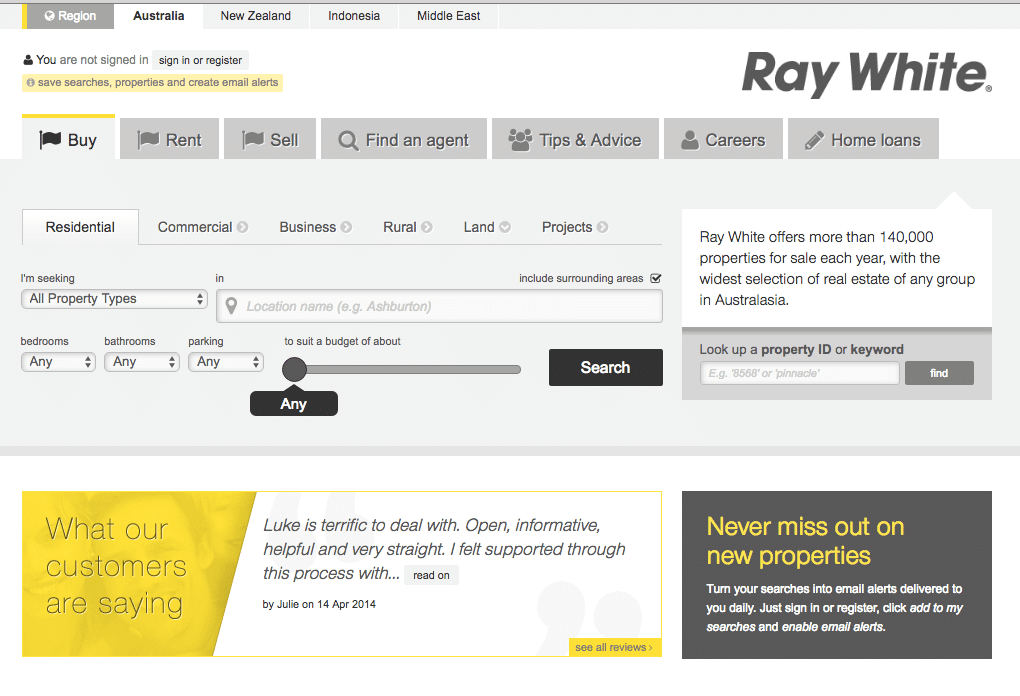
This takes you to a more corporate facing site aimed at the business users but matching the original branding.
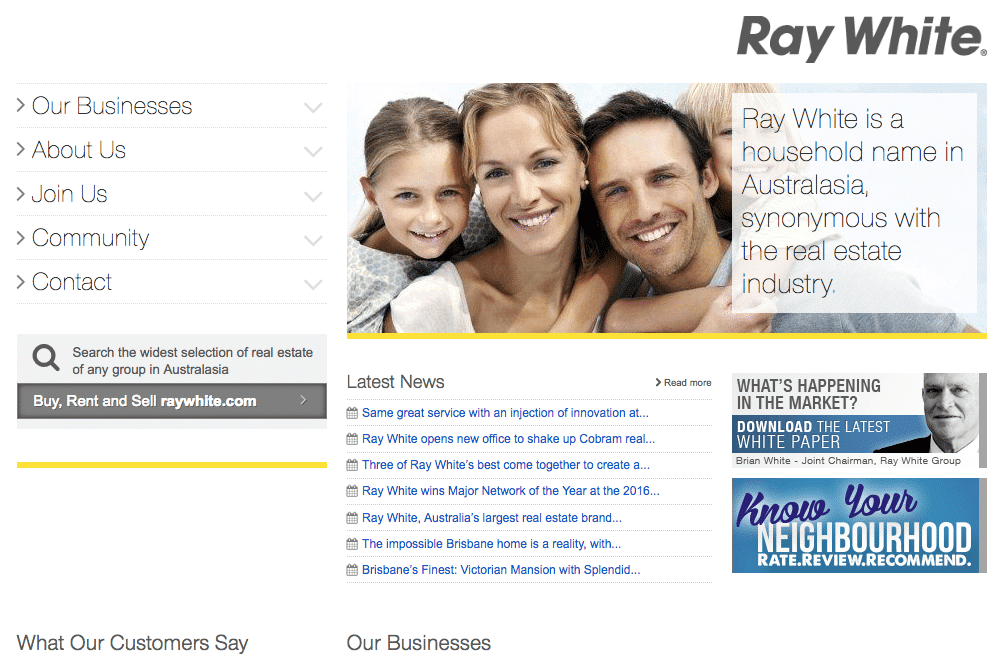
The corporate site has a different look and feel but maintains some of the structural and creative elements from the main site.
Coles
A heavily-focused retail brand, Coles draws a number of its cues to the corporate side of its business throughout the site. It also diverts users to the ‘corporate responsibility’ side in one instance (heavily Coles’ branded and visible in main nav) and then ‘WesFarmers’ communication too.
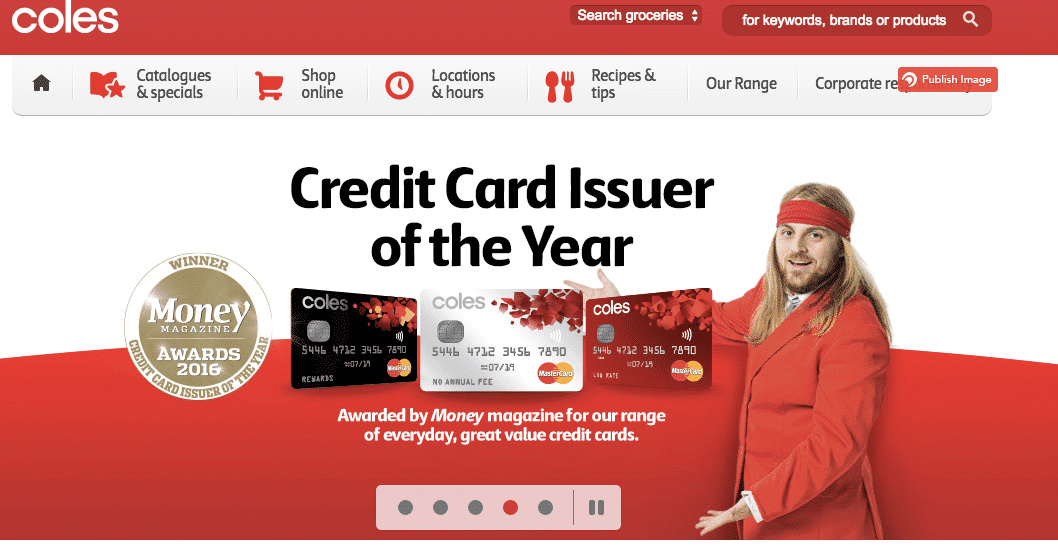
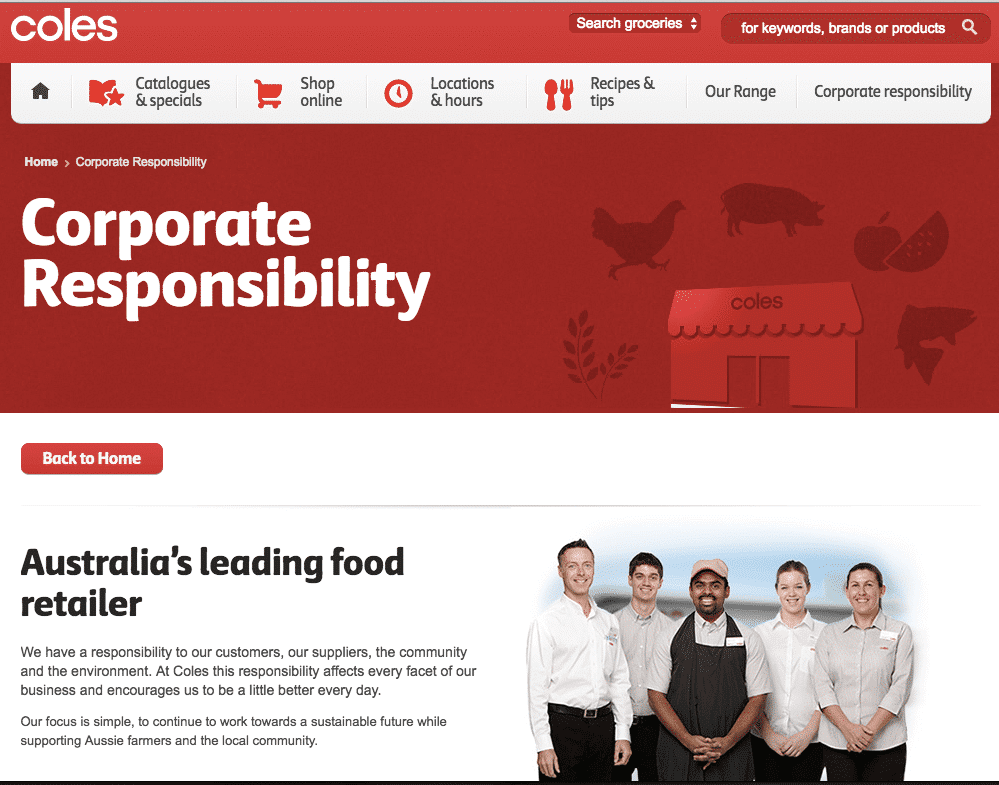
Conclusions
There are some solid business reasons for building stand alone websites – capturing more digital traffic, clear definition of the brand values and clarity for the end user being three core ones. But this needs to be weighed up against the overall goals of the business.
In some instances merged communications can be effective and necessary; and in other instances it can be blurred and ugly.

